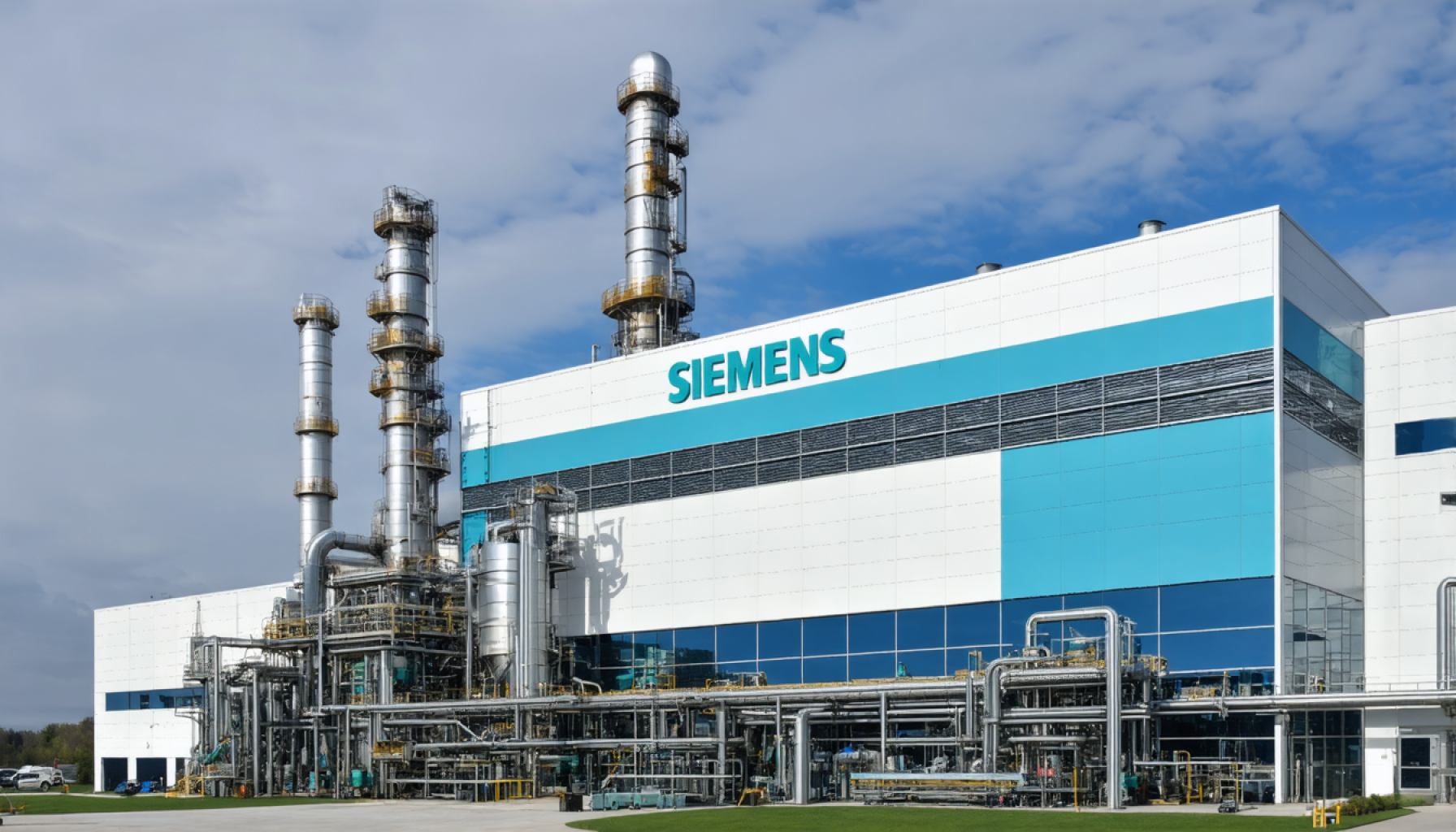- Siemens invests over $10 billion to enhance U.S. operations, focusing on electrification and digitalization, revitalizing American manufacturing.
- The company commits $285 million to establish two high-tech manufacturing facilities in Fort Worth, Texas, and Pomona, California, creating over 900 skilled jobs.
- New facilities will support AI-driven data centers, benefiting the commercial, industrial, and construction markets.
- Siemens integrates digital technology to streamline production, reduce material waste, and expedite innovation across industries.
- With U.S. investments exceeding $100 billion, Siemens remains committed to American industrial growth, collaborating with thousands of domestic suppliers.
- Sintavia and GE Aerospace also bolster U.S. manufacturing with significant investments, focusing on additive manufacturing and aerospace supply chains.
- The future of manufacturing is a blend of hardware innovation and digital technology, positioning the U.S. as a leader in industrial excellence.
A tectonic shift in the industrial landscape is quietly unfolding as Siemens, a stalwart of German engineering, pledges over $10 billion to catalyze its U.S. operations. This bold move promises not just the expansion of its existing footprint, but a revolutionary leap towards electrification and digitalization, underpinning a renaissance in American manufacturing.
Nestled in the burgeoning economic fabric of Fort Worth, Texas, and sun-drenched Pomona, California, Siemens is molding the future of industry. A behemoth investment of $285 million is earmarked to birth two high-tech manufacturing facilities. These sites, humming with industrious activity, are expected to conjure over 900 skilled jobs, a veritable boon for local economies. In addition to fueling the commercial, industrial, and construction markets, these hubs will forge hardware essential for the formidable demands of AI-driven data centers, amplifying U.S. prowess in large-scale computing.
The emphasis is on streamlining production by intertwining traditional manufacturing with cutting-edge digital frameworks. By migrating key design phases into the digital fold, Siemens is poised to curtail material waste and accelerate innovation. The incorporation of artificial intelligence into their operational arsenal is set to refine product development cycles, echoing across countless industries from aviation to automotive.
With Siemens’ total U.S. investments tipping past the $100 billion mark—a devotion decades deep—the company affirms its unwavering faith in the innovative spirit and industrial vigor of America. Over 45,000 employees stand testament to Siemens’ enduring partnership with the nation, bolstered by collaboration with nearly 12,000 domestic suppliers.
In parallel, there’s a ripple effect sweeping across the U.S. manufacturing realm. Florida-based Sintavia, an avant-garde in additive manufacturing, recently secured $10 million from a government-backed fund to bolster aerospace supply chains. Meanwhile, GE Aerospace, a titan of American industry, is infusing nearly $1 billion into expanding its U.S. operations, sharpening its focus on additive manufacturing and next-generation materials.
These strategic advancements underscore a pivotal message: the future of manufacturing lies in symbiosis between hardware innovation and digital prowess. As Siemens etches its indelible mark in the U.S., it galvanizes an era where technology and talent converge, making America a crucible of industrial excellence once more.
How Siemens’ $10 Billion U.S. Expansion is Reshaping American Industry
Siemens’ substantial $10 billion investment in U.S. operations marks a pivotal moment for American industrial growth, especially focusing on electrification and digitalization. This article explores the broader impacts of Siemens’ strategies, considering market trends, potential challenges, and actionable insights.
Market Forecasts & Industry Trends
1. Rising Demand for Digital Manufacturing: Siemens’ investment aligns with the growing trend towards smart manufacturing. By integrating AI and digital frameworks into production, Siemens is addressing the increasing demand for efficient, sustainable, and innovative manufacturing processes. The market for digital manufacturing is projected to grow significantly in the next decade as industries optimize for speed and precision.
2. Electrification Surge: Siemens’ push towards electrification is timely, given the global transition to renewable energy. By creating infrastructure supporting electrification, Siemens supports a critical component of the global energy transition, especially in sectors like transportation and building infrastructure.
Real-World Use Cases
– Data Centers: With AI-driven data centers at the core of future digital infrastructure, Siemens’ new facilities will produce necessary hardware, enhancing the U.S.’s capability in handling large-scale computing.
– Supply Chain Enhancements: Localized production facilities help reduce supply chain complexities and improve the resilience of U.S. manufacturing. Enterprises in aviation, automotive, and energy sectors will benefit substantially from faster and more reliable supply lines.
Reviews & Comparisons
– Siemens vs. Competitors: Compared to competitors like General Electric (GE) and Honeywell, Siemens’ emphasis on integrating AI within manufacturing stands out. While GE invests heavily in additive manufacturing and materials science, Siemens focuses on combining digital and physical realms to drive efficiency.
Security & Sustainability
– Sustainable Practices: Siemens aims to reduce material waste through digital design and production processes, contributing to decreasing the environmental impact of manufacturing.
– Jobs and Economy: The creation of over 900 skilled jobs amplifies economic benefit in Texas and California, promoting community growth and sustainable economies.
Insights & Predictions
– Strong Domestic Supply Chains: With nearly 12,000 domestic suppliers, Siemens is effectively building a strong local supply chain, safeguarding the company from global disruptions.
– AI Innovation: Siemens’ investments may position it as a leader in AI utilization in manufacturing, potentially creating new industry standards and influencing competitors to follow suit.
Pros & Cons Overview
Pros:
– Enhances U.S. manufacturing competitiveness.
– Generates significant local employment.
– Aligns with global sustainability goals.
Cons:
– Potential market saturation as more players invest in similar technologies.
– Initial resistance in integrating AI within old manufacturing paradigms.
Actionable Recommendations
– For Businesses: Leverage Siemens’ digital solutions to optimize manufacturing processes and stay competitive.
– For Job Seekers: Explore training in digital manufacturing and AI integration to take advantage of new job opportunities.
– For Communities: Engage with Siemens’ local operations to stimulate economic growth and innovation.
Conclusion
Siemens’ $10 billion commitment is more than a financial investment; it’s a strategic move to shape the future of U.S. manufacturing by focusing on digitalization and electrification. As Siemens enhances its American footprint, industries and local economies should prepare to embrace these changes for a more innovative and sustainable future.
For more insights about Siemens, visit Siemens Official Site.













